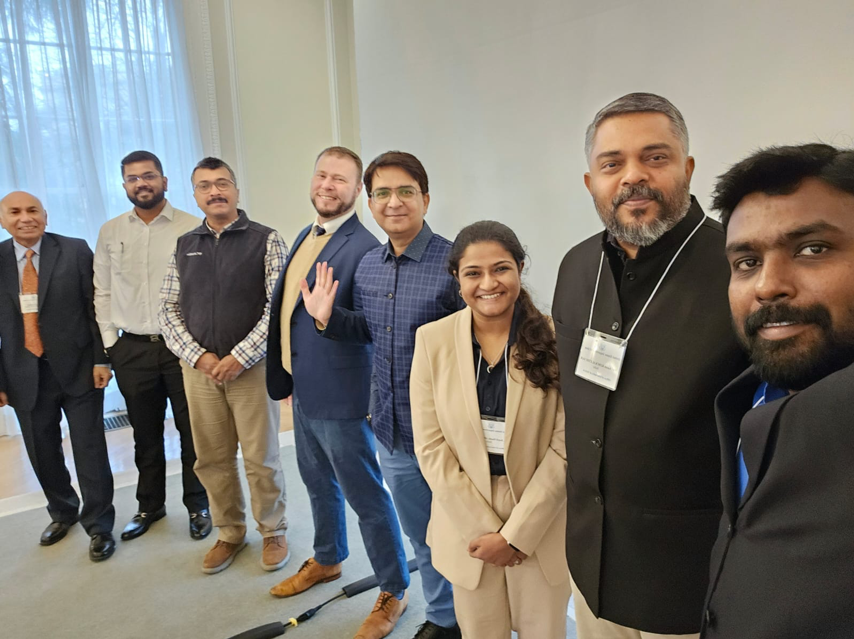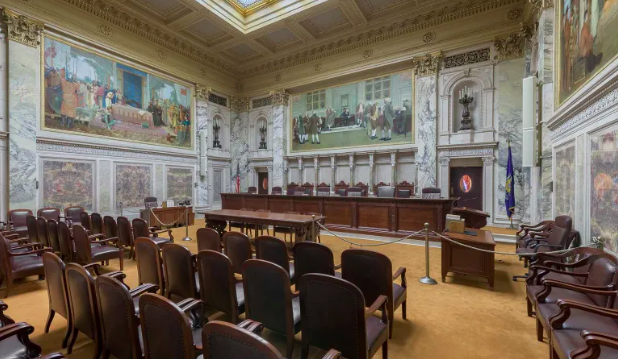Recent government actions (including an Austrian law restricting German translations of the Qur’an, a German circumcision ban, a French headscarf ban, and a Swiss aminaret ban) are restricting Muslims’ religious freedom in western Europe. Please join us on Cornerstone as diverse commentators explore the obstacles that European Muslim communities face and what these challenges mean for the future of religious freedom.
By: Farid Hafez
Muslims have become the internal “other” in Europe. While the Orientalist paradigm (Edward Said) construed the image of the Muslim as a geographical “other,” located far away, belonging to a strange culture and religion, Muslims nowadays are part and parcel of European societies. They make up roughly 10 percent of Europe’s whole population. After World War II up to the 1970s, nobody would have thought that the presence of Muslims would present a challenge to European societies and their governments as much as is the case today.
European countries that see themselves and let other countries regard them as the cornerstone of human rights and democracy are at the very same time home to a secularization paradigm, a “global exception” (José Casanova) that allows the continent to regards itself as a place where people have overcome religious beliefs and their possible meaning in or even impact on everyday life. Thus, European societies were astonished to see Muslims in the second to fourth generations of immigrant people going back to their religious beliefs. This challenged Europe’s self-perception as a stronghold of European enlightenment. The accommodation of Muslim practices meant not only a need for Europeans to incorporate a fairly new religious tradition into the social and political system. It also meant that historical contentions between an imagined East and West could be reactivated.
The disappearance of the communist enemy from global politics meant that its place could be occupied by the green Muslim enemy. As international politics proclaimed a clash of civilizations, global and territorial conflicts were read as cultural and religious conflicts. Also, far right populist and extremist parties in Western Europe started picking at the Muslim enemy within European nation states. As much as the “Jewish question” was debated at the turn of the century one hundred years ago, now it’s the “Muslim question” (Anne Norton) that is problematized and debated.
Islamophobic discourses can vary a lot between different actors, depending on which milieu they come from. In terms of its argumentation strategy, a secularist Islamohobic discourse may have little in common with a religiously motivated Islamophobic discourse except for its ends: the discrimination of a particular faith group. To give but one example, the 2009 campaign for a ban of minarets in Switzerland was initiated and supported not only by the right wing populist party, but also by feminists and evangelical fundamentalists. Hence, it can be argued that Islamophobic discourse has become hegemonic and has turned out not to be located at the fringe of European societies, but in the heart.
When differences and parallels of current Islamophobia and (voelkisch) anti-Semitism are discussed, many argue that the political systems then and now are too different to make comparisons. On the one hand, it is true that we now live in constitutional democracies, while the Nazi-regime was an ideological, authoritarian state. On the other hand, rhetorical arguments aimed at excluding Muslims from the national “we” have something in common with voelkisch anti-Semitism. See for instance the demand for control over synagogues/mosques, religious textbooks, preachers in synagogues/mosques, kosher/halal foods, or debates around circumcision. These discourses were and are based on the basic assumption of the figure of the Jew/Muslim as the ultimate “other” that is connected to a global community of believers and not to the national community.
Bans of circumcision for boys, the headscarf and the niqab, mosques, and minarets, as well as continuous vandalism against Islamic institutions and discrimination in the labor market have become a reality for Europe’s Muslims. How can this be in constitutional democracies that refer to themselves as liberal?
It is notable that Islamophobia portrays Islam as an illiberal, backward, and violent religion or even culture that wants to conquer the world, Islamize Europe, and eradicate everything different from Islam, while, in fact, it is European governments themselves that are acting on an illiberal ideology. These illiberal European politics are legitimized as a defense against illiberality. The argument goes that if Islamism is given too much freedom, Islamists would conquer democratic space and fill it with “Islamofascism” (Norman Podhoretz). This is how the headscarf-ban for Muslim teachers was argued in Germany. It was not about banning a religious practice, but about outlawing a political symbol (Islam is construed as a political ideology and not as a religion). Through such illiberal laws and restrictions, European nation states are deceiving themselves. Thedemos of democracy is being divided into different parts: There is the class of full citizens and there is the class of Muslim citizens, who are ultimately construed as the “other,” second-class citizens.
When we speak about the spread of the institutionalization of Islamophobia, which can be observed in the legal othering of Muslims (as is the case with the banning of certain religious institutions) or the legal non-recognition of Muslims (such as the absence of a legally recognized Muslim denomination in the taxation system of Germany), the main target of these laws and restrictions is not Islam, but Europe itself. As Edward Said already declared for Orientalism, Orientalism is not about the Orient. Rather it is a projection of fears and desires. In the same way, Islamophobia is not about Islam or Muslims. Rather, it is about the Islamophobic actor and his fears and desires.
The “continent of fear,” as Dominique Moisi refers to Europe in his Geopolitics of Emotion, is giving up its own ideals and values due to a lack of empathy—an empathy that would enable European nations to accommodate a new religion and give it an equal status to other faith communities.
Farid Hafez is a researcher at the Department of Political Science at the University of Salzburg.
This piece was originally authored on December 19, 2014 for the Religious Freedom Project at Georgetown’s Berkley Center for Religion, Peace, and World Affairs.
THE RFI BLOG

Be More Faithful, Become More Resilient: An Invitation to Religious Institutions

How Soccer Reveals Different Meanings Of ‘Secular’ In France And The US

RFI’s Ismail Royer Meets with Delegation from India

Protecting the Unborn, Mothers, and Medical Ethics: The Stakes of Arkansas’ Amendment

Wisconsin Supreme Court Punishes Catholic Charities for Serving Everyone
CORNERSTONE FORUM

Public Bioethics & the Failure of Expressive Individualism

Religious Liberty in American Higher Education

Scotland’s Kate Forbes and the March of Secularism

70 Years of Religious Freedom in Sweden: Prospects and Challenges


